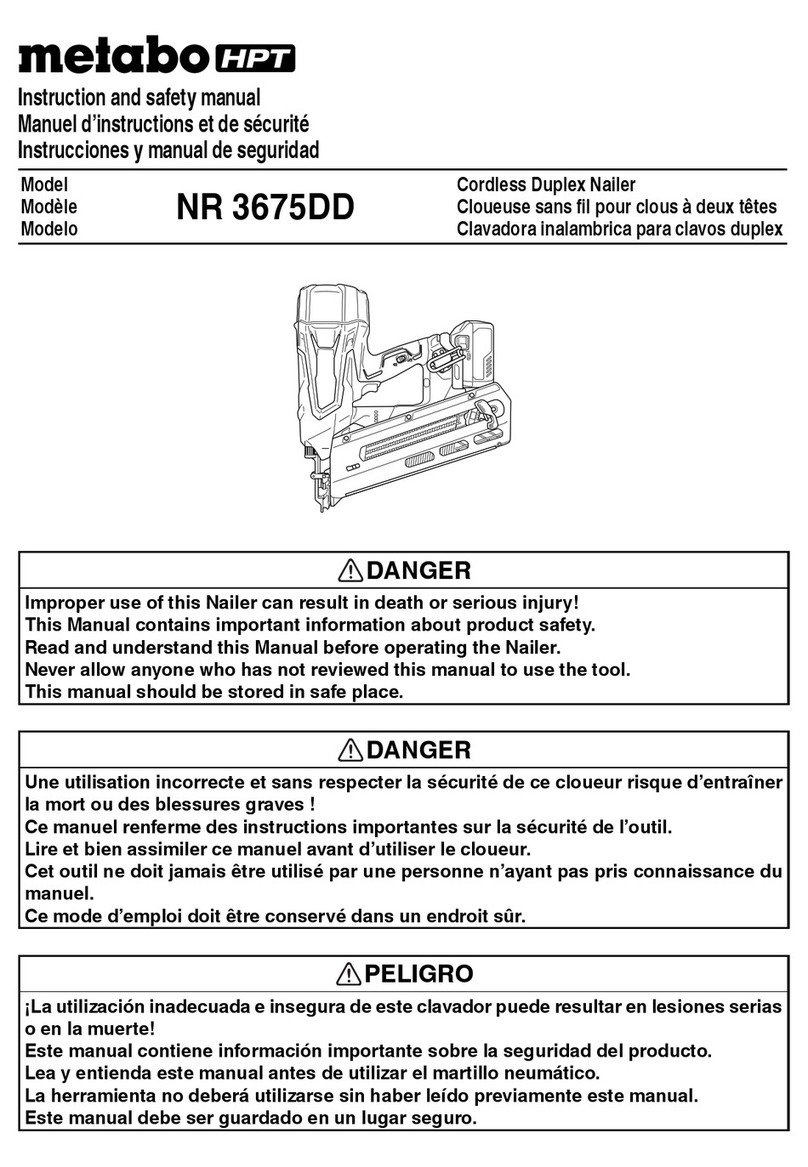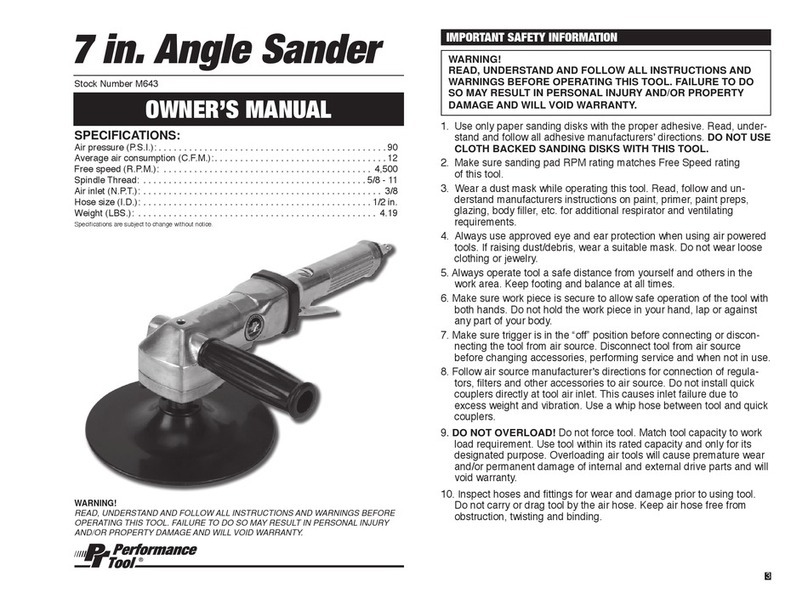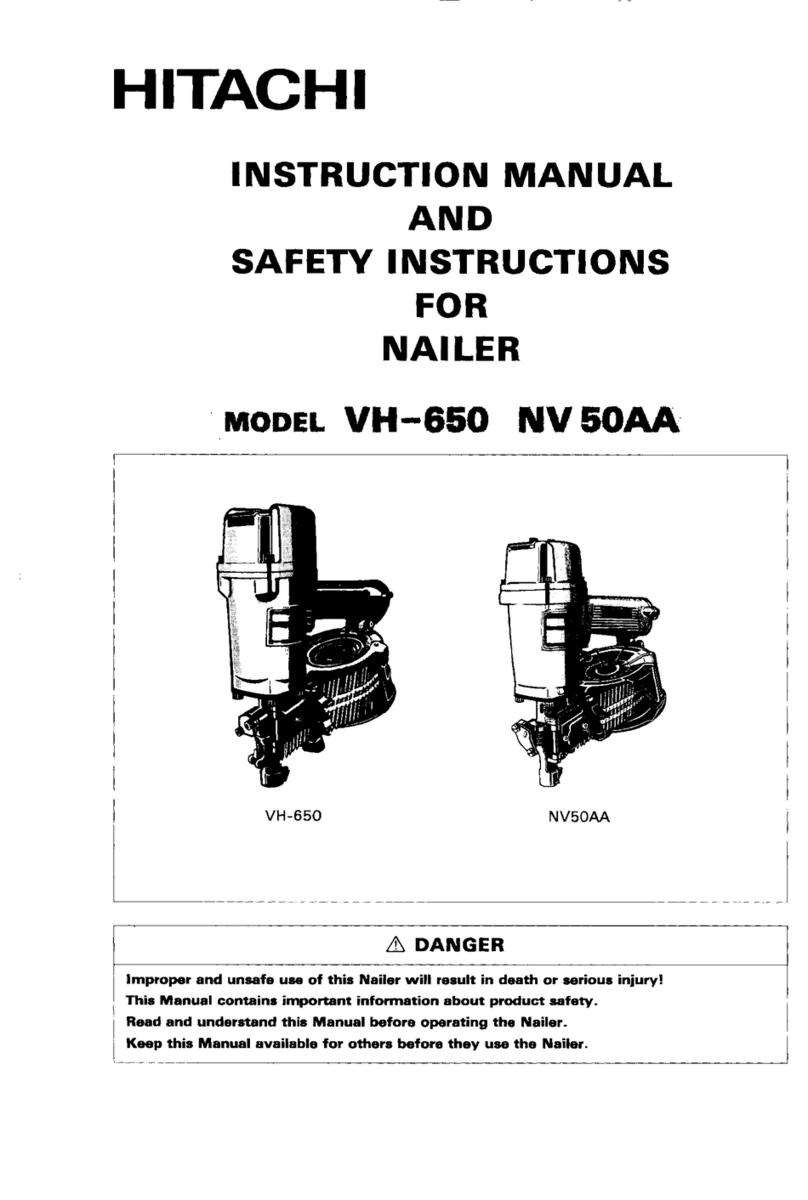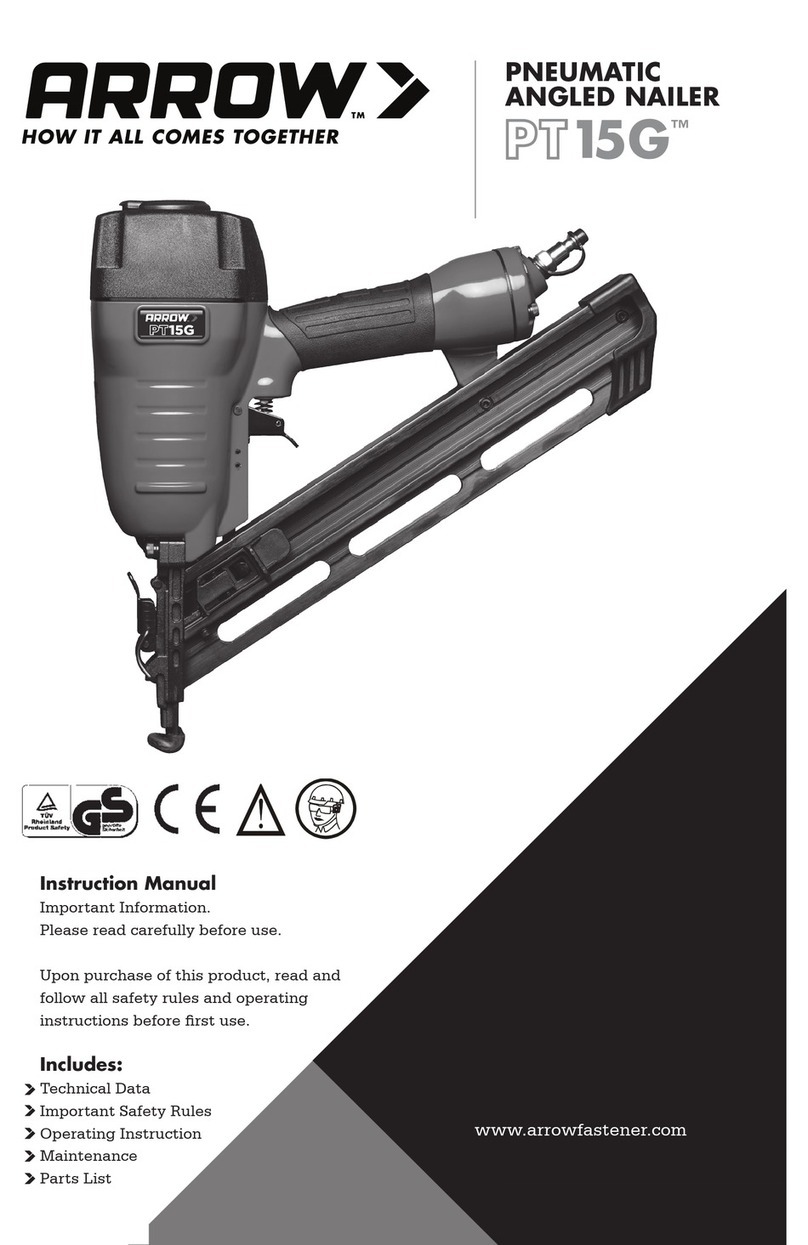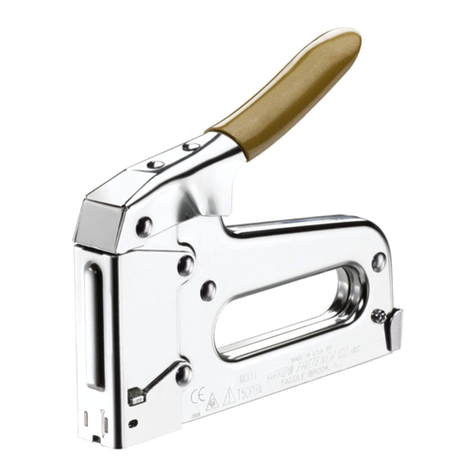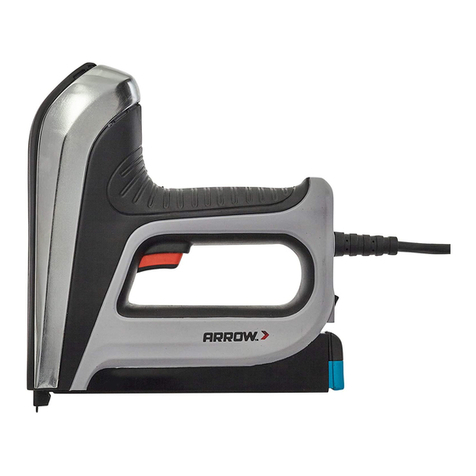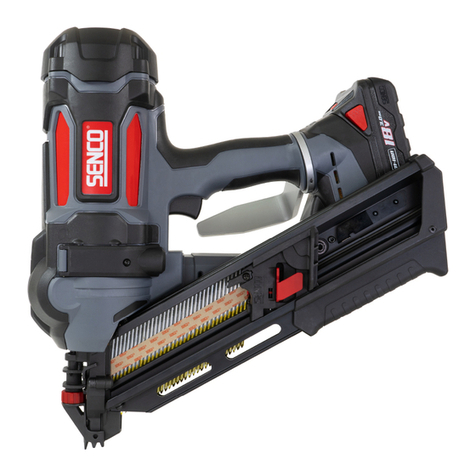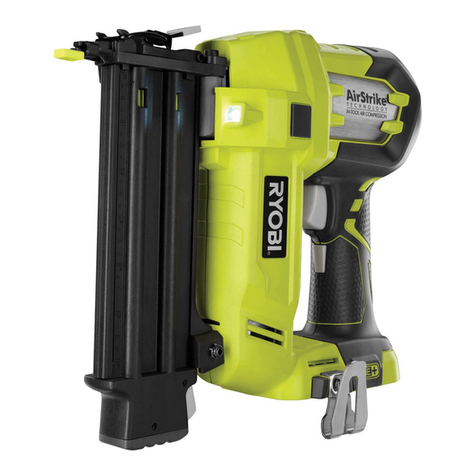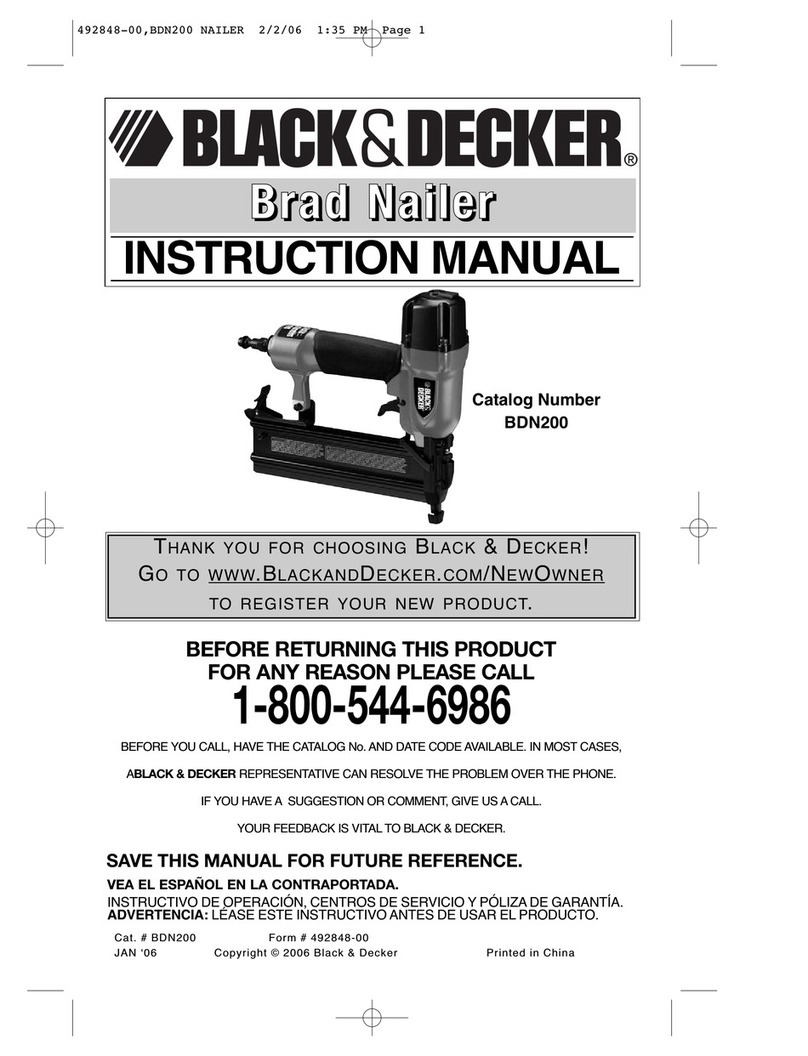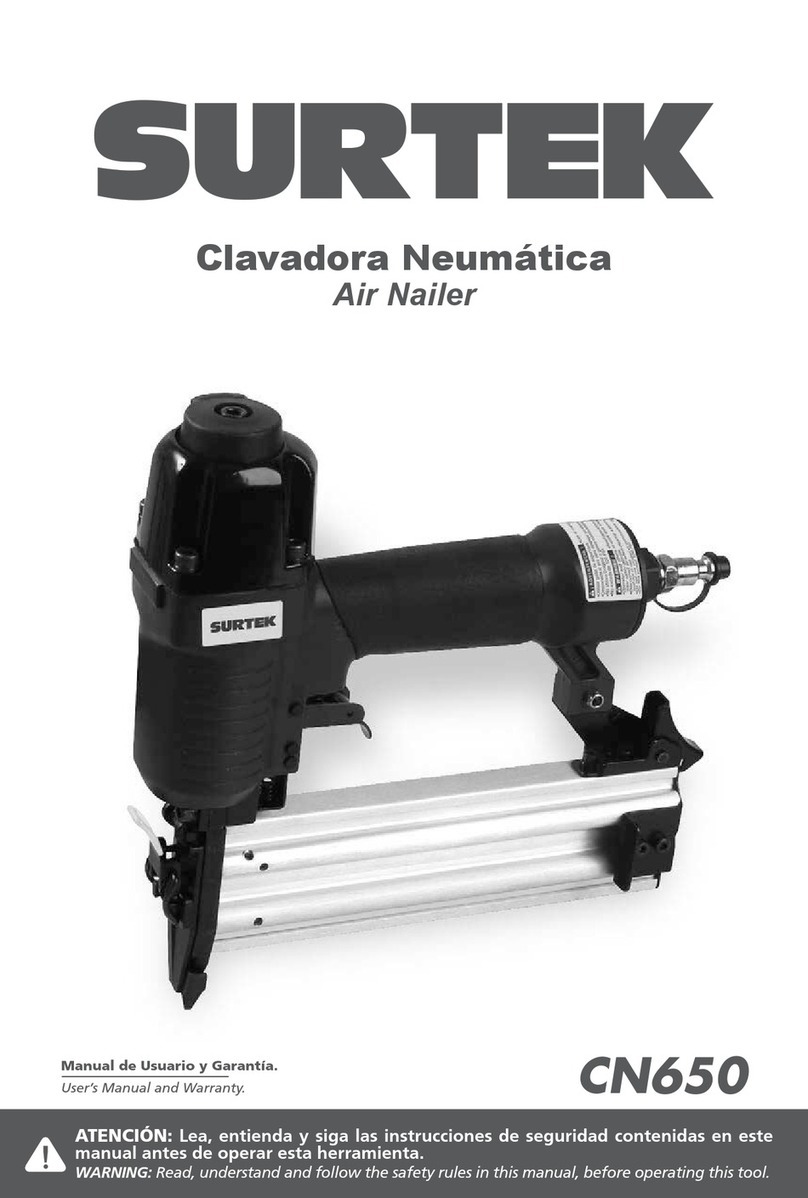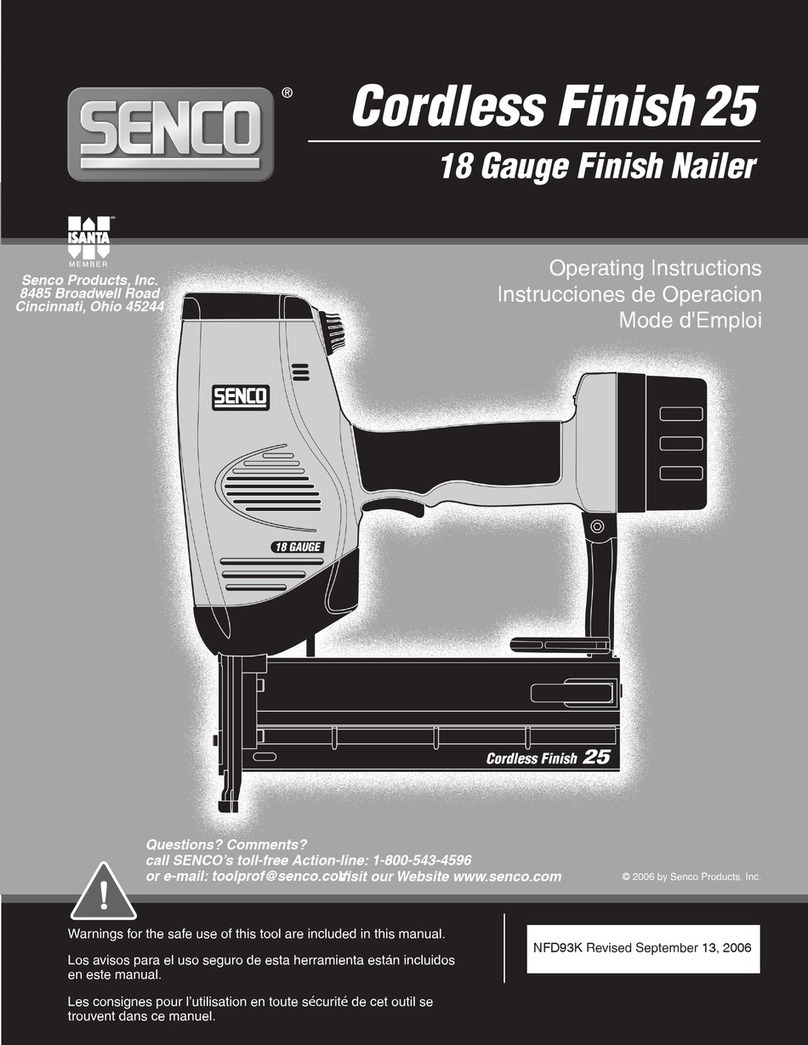
3
GEN ERAL POW ER TOOL SAFETY WARN IN GS
WARN IN G! Read all safety w arnings and all instructions. Failure to follow the w a rning s and instructions may result in electric shock, fire and/or
serious injury. Save all w arnings and instructions for future reference.
!
The term “pow er tool” in the w arnings refers to your mains-operat ed (corded)
pow er tool.
1. WORK AREA SAFETY
a) Keep w ork area clean and w ell lit. Cluttered or dark areas invite accidents.
b) Do not operate pow er tools in explosive atmosphere, such as in the
presence of flammable liquids, gases or dust. Pow er tools creat e spa rks,
w hich may ignite the dust or fumes.
c) Keep children and bystanders aw ay w hile operating a pow er tool.
Distractions can cause you to lose control.
2. ELECTRICAL SAFETY
a) Pow er tool plugs m us t m atch the outlet. Nev er modify the plug in any w ay.
Do n ot use any adapter plugs w ith earthed (grounded) pow er tools.
Modifying plug and failure to u se proper outlet increa ses risk of electrical shock.
b) Avoid body contact w ith earthed or grounded surfaces such as pipes,
radiators, ranges and refrigerators. The re is an increase d risk of electric
shock if your body is e arthed or grounded.
c) Do not expose pow er tools to rain or w et conditions. Gettin g a p ow e r t ool
w et w ill in crease th e risk of ele ct ric shock.
d) Keep cord intact. Do not abuse cord. Never use the cord for carrying,
pulling or unplugging the pow er tool. Keep cord aw ay from heat, oil, sharp
edges or moving parts. Damaged or entangled cords in crease the risk of
electric shock.
e) When operating a pow er tool outdoors, use an extension cord suitable for
outdoor use. Use of a cord su itable for out door use reduces the risk of
electric shock.
f) If operating a pow er tool in a damp location is unavoidable, use a residual
current device (RCD) protected supply. Use of an RCD reduces the risk of
electric shock.
3. PERSONAL SAFETY
a) Stay alert, w atch w hat you are doing and use common sense w hen
operating a pow er tool. Do not use a pow er tool w hile you are tired or
under the influence of drugs, alcohol or medication. A momen t of
inattention w hile operating pow er tools may result in serious personal injury.
b) Use personal protective equipme nt. Alw ays w ear eye and ear protection.
Prote ctive equipment such as dust masks, non-skid safety shoes, hard hats,
or hearing protection used for appropriate conditions w ill reduce the risk of
personal injuries.
c) Prevent unintentional starting. Ensure the sw itch is in the off-position
before connecting to the pow er source and/or battery pack, picking up or
carrying the tool. Carrying pow er tools w ith your finger on the sw itch or
energizing pow e r tools th at have the sw itch on invite s accidents .
d) Remove any adjusting key or w re nch before turning the pow er tool on.
A w rench or a key left attached to a rota ting part of the pow er tool may
result in personal injury.
e) Do not overreach. Keep proper footing and balance at all times. This
enables better control of the p ow er tool in un expe cted s ituations.
f) Dress properly. Do not w ear loose clothing or jew elry. Keep your hair,
clothing and gloves aw ay from moving parts. Loose clothe s, jew elry or long
hair can be caught in moving parts.
g) If devices are provided for the collection of dust, ensure these are
connected and properly used. Use of these devices can reduce dust-rela ted
hazards.
4. POWER TOOL USE AND CARE
a) Do not force the power tool. Use the correct pow er tool for your application.
The corre ct pow e r tool w ill do the job b etter a nd safer at the rate for w hich it
w as des igned.
b) Do not use the pow er tool if the sw itch does not turn it on and off. Any
pow er tool th at cannot be cont rolled w ith the sw itch is dange rous and
mus t be repaired.
c) Disconnect the plug from the pow er source before making any adjustments,
changing accessories, or storing pow er tools. Such preven tive safe ty
mea sures reduce th e risk of start ing the pow er tool accidentally.
d) Store idle pow er tools out of the reach of children and do not allow persons
unfamiliar w ith the power tool or these instructions to operate the pow er
tool. Pow er tools are dange rous in the hands of un train ed users.
e) Maintain pow er tools. Check for misalignment or binding of moving parts,
breakage of parts and any other condition that may affect the pow er tools
operation. If damaged, have the pow er tool repaired before use. Many
accidents are caused by poorly ma intaine d p ow er tools.
f) Keep cutting tools sharp and clean. Properly maintained cutting tools w ith
sha rp cuttin g e dges are less likely to b ind and are easie r to control.
g) Use the pow er tool, accessories and tool bits etc., in accordance w ith these
instructions, taking into account the w orking conditions and the w ork to be
performed. Use of the pow er tool for ope rations different from those
inte nded by the manufacturer could result in a ha zardous situation.
5. MAINTENANCE
a) Have your pow er tool serviced by a qualified repair person using only
identical replacement parts. This w ill help e nsure that the safe ty of the
pow er tool is ma intaine d.
